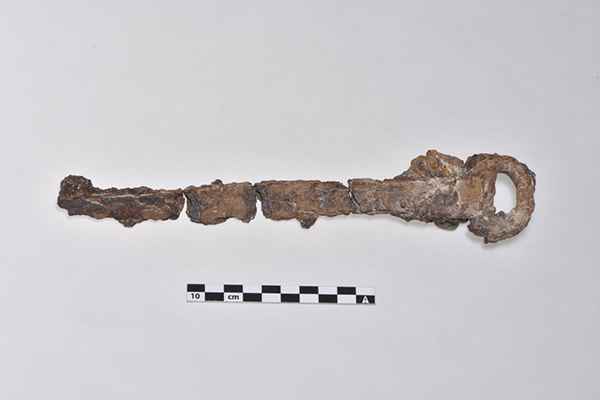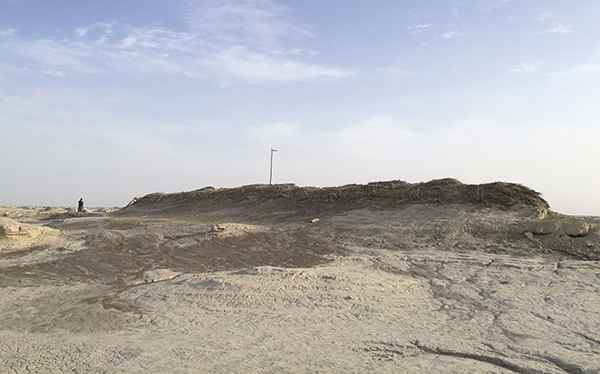 A knife unearthed (Photo/People's Daily Online)  A section of the city wall (Photo/People's Daily Online) Archaeologists have inferred that ruins found in Lop Nur in Xinjiang Uygur Autonomous Region may actually be from the ancient city of Loulan, judging by their shape, construction and other characteristics. The ruins were found on the northern bank of Peacock River. Carbon dating indicates that the relics could date back more than 1,000 years. The ruins of the ancient city lie 57.5 kilometers southeast of the ancient site of Loulan, discovered by Swedish explorer Sven Hedin in 1900.' The layout of wall fragments indicates that the city might have been arranged in a circle, with a diameter of 300 meters, according to Hu Xingjun, associate research fellow with the Xinjiang Institute of Cultural Relics and Archaeology. Archaeologists have also found pottery fragments, copper arrows, copper bracelets, brass buckles and other remains, most of which originated during the Han (B.C.202—220) and Jin (A.D.266-420) Dynasties. Several nearby tombs were discovered as well. In two of the unearthed tomb pits, archaeologists found tapestry fragments, implying that the tombs in question were of a high standard. They believe the tombs were used to bury nobles from that period. Loulan, or Kroraina, was one of the pivotal stops along the famous Silk Road, but mysteriously disappeared around the Third Century AD. |
Powered by Discuz! X3.4
© 2001-2013 Comsenz Inc.